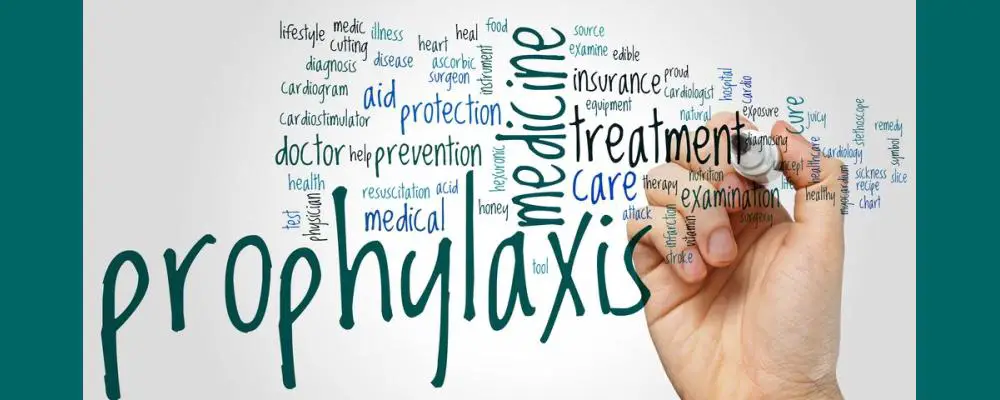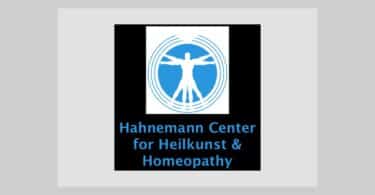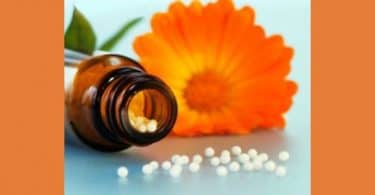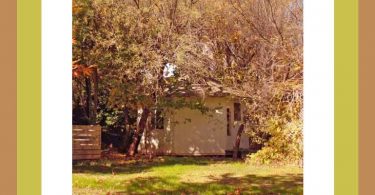INTRODUCTION:
It is said by the ancients that, “An ounce of prevention is worth a pound of cure”. Just as the Law of Similars is used to choose remedies for treatment, it is also applied for prevention. Remedies not only treat symptoms in the sick similar to those they produce in the healthy, but prevent similar symptoms in the healthy as well.
Homeopathic prophylaxis had its beginnings with the father of homeopathy. Hahnemann conceived of prevention of diseases long before modern medical science. He used to give detailed advice with regard to eating and drinking, clothing and housing. During outbreaks of epidemics, he insisted that the sick be segregated from the healthy and if necessary with police compulsion. He sometimes forbade visiting of patients in order to prevent the propagation of infectious diseases. Hahnemann published a famous book called “The Friend of Health” in two volumes, in which he recommended fresh air, bed rest, proper diet, sunshine and public hygiene.
Modern medicine considers micro-organisms as a cause of diseases and provides prevention against that, while our conception is that all these micro-organisms are the product of disease, after the dynamic derangement of the vital principle has already taken place. We have to provide prevention against this dynamic derangement. Homoeopathy is always superior in that it corrects the individual’s susceptibility. Neither does it suppress disease, nor directly deal with the end product of disease.
DEFINITION:
The process of disease prevention by Homoeopathic remedies is called Homoeopathic prophylaxis or Homoeoprophylaxis.
HAHNEMANN’S CONCEPT OF PROPHYLAXIS:
Master Hahnemann first mentioned the concept of prevention of diseases in the book Friend of Health. In this he writes about general measures of hygiene, specifically disposal and sale of used clothes as well as maintenance of cleanliness in crowded areas like prisons, which he referred to as “death-laden walls”.
Dr. Wheeler justly remarks that these ideas testify strongly to Hahnemann’s keen observation and the practical nature of Hahnemann as a physician. These aspects of prevention were more or less ignored by physicians at that time. The concept that infectious diseases could be prevented by such simple methods was new to medicine.
In the days when the science of public health did not exist, when bacteriology, infection and immunity were unknown, careful observation and shrewd deduction alone let Hahnemann formulate these suggestions. These ideas hold good even today.
Prevention of an infectious disease by means of an internal remedy was first mentioned in 1801, in the article Cure and Prevention of Scarlet Fever. To understand how and why Hahnemann came to the concept of Prophylaxis, we need to delve further into his writings.
During a 1799 scarlet fever outbreak in Germany, Dr. Hahnemann observed that three children in a family contracted the disease, but the fourth remained unaffected. The fourth had been treated with homeopathic Belladonna for an unrelated joint problem. Dr. Hahnemann reasoned that perhaps the dose of Belladonna had protected the child from scarlet fever as well as having treated the joint affliction. Soon afterward, he was able to test his theory when, in another of his patient’s families, three children in a family of eight contracted scarlet fever. Hahnemann administered homeopathic Belladonna to the remaining un-afflicted five, and all five remained symptom free. Hahnemann continued using Belladonna during this epidemic, and soon conventional physicians took note and began using the same protocol. Hahnemann subsequently detailed his success and prophylactic recommendations in an 1801 booklet called Cure and Prevention of Scarlet Fever.
Dosage and repetition:
To a child 1 year old 2 drops, to a child 2 years old 4 drops and so on up to 30 drops, a dose every 72 hours as long as the epidemic lasts, and four to five weeks thereafter. Frequent doses were to be given if the epidemic be too violent, or if the action of the medicine was hampered by any violent mental depressions or physical injury in that duration.
To stress the importance of the preventive aspect of health, Dr. S. Hahnemann stated in § 4 “He is likewise a preserver of health if he knows the things that derange health and cause disease, and how to remove them from persons in health.”
In the footnote to aphorism 73, he further stresses the importance of distinguishing between types of epidemic). Hahnemann gives an example of purpura miliaris or roodvonk, which came from the West and was confused by the allopathic physicians with Scarlet Fever, even though they exhibited totally different symptoms.
Hahnemann says that through careful observation and experimentation, he had discovered that Aconite was the preventive remedy for this disease, which was different from Scarlet fever, for Belladonna was used.
- PRIMORDIAL PREVENTION: It deals with prevention of development of risk factor. Physician should discourage a person from adopting a harmful lifestyle. This type of Homoeopathic prevention is seen in Organon of medicine:
As per F.N.§ 284 Sixth Edition – In order to prevent coming generations from ill effects of Psora, the mother should be given a mild antipsoric medicine, especially sulphur to destroy the Psora (in mother & fetus both) that produces of most chronic diseases. Treating a pregnant will usually facilitate birth of a child that is healthier and stronger.
- PRIMARY PREVENTION: It deals with the health promotion and specific protection. Here an action is taken prior to the onset of disease, by specific one or genus epidemicus or constitutional correction, using an anti-miasmatic medicine and considering the accessory circumstances as described by Dr. Hahnemann in Organon of medicine.
As Per B. K. Sarkar, homoeopathy can assist in an epidemic in two ways–
- By administering an immunizing agent by way of the mouth potentized like other homoeopathic remedies, and selected for its similarity with the particular form of the epidemic.
- By elevating the patient to that higher level of health which bestows the utmost general immunity and the greatest power of recuperation. This is accomplished by means of constitutional treatment. The action of the constitutional remedy (not by any means the same for everybody) is used to cure morbid tendencies, build resistive power, bestow the power of recovery and thus to promote the highest general immunity.
As Per Hahnemann:
Primary prevention in the form of a specific medicine for a specific disease.
In f. N. Of § 73, he discusses his use of Belladonna for prevention of scarlet fever and aconite for pupura millaris.
In The Chronic Diseases Hahnemann speaks of Bryonia and Rhus tox as two specific remedies for the acute miasm of typhus in 1813.
Or by means of genus epidemicus as described in § 102 with its f. N. & § 141, The same medicine is administered for many cases suffering from the same symptoms during an epidemic
- 102 with f. N. “..All those affected with the disease prevailing at a given time have certainly contracted it from one and the same source and hence are suffering from the same disease. The whole extent of such an epidemic disease and the totality enables us to choose the most suitable homoeopathic remedy for the array of symptoms. It is obtained by a complete survey of the morbid picture..”
- 241. Epidemics of intermittent fever, in situations where none are endemic, are of the nature of chronic diseases, composed of single acute paroxysms; each single epidemic is of a peculiar, uniform character common to all the individuals attacked, and when this character is found in the totality of the symptoms common to all, it guides us to the discovery of the homoeopathic (specific) remedy suitable for all the cases, which is almost universally serviceable in those patients who enjoyed tolerable health before the occurrence of the epidemic, that is to say, who were not chronic sufferers from developed psora.
Treatment of a patient in its primary or latent stage of miasmatic development is also a prophylaxis against development of secondary pathological symptoms. Regarding mental diseases, certain types can be prevented with the help of antimiasmatic treatment in early stage:
- 221. Insanity, mania caused by fright, vexation, liquor have appeared as in aute form, then it shoud be treated first with a proved (non-antipsoric) indicated medicine ( e.g. aco, bell, hyo, merc).
- 222. When the acute condition is removed, patient should not be regarded as cured and immediately prolonged antipsoric treatment should be given. If it is done, there is no fear of another similar attack.
- 223. If antipsoric treatment is omitted, then these cases will come back from the slightest cause. The Psora develops completely and disease becomes more difficult to cure.
Again Hahnemann said in § 227, “ the fundamental cause in these (emotional diseases § 225) cases is a psoric miasm, which was only not yet quite near its full development, and security’s sake, the seemingly cured patient should be subjected to a radical, antipsoric treatment, in order that he may not again, as might easily occur, fall into a similar state of mental disease”
As a preventive in the absence of genus epidemicus:-
The constitutional medicine given on the basis of similia, helps the immune system. By strengthening the immunity, the diseases can be handled successfully.
Cases with unknown pathology or etiology:-
It is one of the most unique contributions of Homoeopathy that it treats even those diseases where no diagnosis is possible. We have a tremendous advantage over other systems of treatment. Our prescribing is based upon the symptoms which can be perceived much before the tissues changes develop.
- SECONDARY PREVENTION: It deals with early diagnosis & treatment. We halt the progress of diseases by choosing a simillimum in an early stage to avoid development of deep seated involvement of more important organs.
B.K. Sarkar goes on to add that we as homoeopaths make use of a great deal of inadvertent preventive medicine in our daily practice due to the abortive effects of the clearly prescribed remedy. For example, a case of cold in the head does not turn into severe sinusitis. This is an example of secondary prevention.
- TERTIARY PREVENTION: It deals with disability prevention & rehabilitation. It is well known that if the most similar remedy is given to the patient in the initial stages of a disease, it can prevent further progression of structural damage in the body. Even in cases where irreversible structural changes have taken place, we can palliate the case, which is again based on the law of similia.
CONCLUSION
Health is not merely the state of being free of any disease but is the power to resist, power to recover, power to adapt life to conditions without fear; the power to live a full life in the world.
BIBLIOGRAPHY:
- Hahnemann, S.; First Corrected, Re-translated and Redacted English Edition of Organon of Medicine by Dr. Mahendra Singh and Dr. Subhas Singh; 6th and 5th Edition with an Appendix; Homoeopathic Publications; Kolkata; 201
- Hahnemann, S.; The Chronic Diseases, their peculiar nature and their Homoeopathic Cure; Low Priced Edition; B. Jain publishers; Delhi; 2007
- Dudgeon, R.E.; The Lesser Writings of Samuel Hahnemann; 11th impression; B. Jain publishers; Delhi; 2013
- Kent, James Tyler; Lectures on Homoeopathic Philosophy; Reprint 6th edition; B. Jain publishers; Delhi; 2006
- Roberts, H.A.; The Principles and Art of Cure by Homoeopathy; 3rd edition; B. Jain publishers; Delhi; 2005
- Close, Stuart; The Genius of Homoeopathy Lectures and Essays on Homoeopathic Philosophy; 2nd Edition; B. Jain publishers; Delhi; 2007
- Sarkar, B.K.; Essays on Homoeopathy; Ist edition; Hahnemann publishing Co. Pvt. Ltd.; 1968
- Dey, S.P.; Essentials of Principles and Practice of Homoeopathy; Ist edition; AlokBaran De; Kolkata; 1981
- Park, K.; Park’s Textbook of Preventive and Social Medicine; 20th Edition; Banarsidas Bhanot Publishers; Jabalpur; 2009





